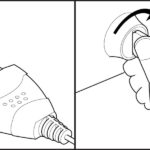Dealing with a persistent check engine light, noticing a dip in your car’s performance, or just completed some modifications? Resetting your vehicle’s Engine Control Unit (ECU) might be on your mind. It’s a procedure that many car owners consider, and the question often pops up: How To Reset Ecu With Obd2 scanner?
In this guide, we’ll dive deep into the process of resetting your ECU using an OBD2 scanner. We’ll clarify what kind of OBD2 scanner you’ll need, provide a step-by-step walkthrough of the reset procedure, discuss the potential risks involved, and explore alternative methods if you’re not comfortable doing it yourself.
By the end of this article, you’ll be well-informed to decide if resetting your ECU with an OBD2 scanner is a task you can confidently handle or if it’s better to seek professional assistance.
Understanding the Basics of ECU Resetting
Before we jump into the “how-to,” let’s understand what an ECU is and why you might need to reset it. Your car’s ECU is essentially its brain, a sophisticated computer that controls various aspects of your engine’s performance and other vehicle systems. It monitors data from numerous sensors throughout your car and makes real-time adjustments to optimize engine operation, fuel efficiency, and emissions.
Over time, the ECU learns and adapts to your driving habits and environmental conditions, storing this information as “adaptive learning data.” Sometimes, due to various reasons like sensor malfunctions, software glitches, or even after repairs or modifications, you might need to reset the ECU.
Reasons for resetting your ECU can include:
- Clearing Check Engine Lights: After fixing an issue that triggered the check engine light, resetting the ECU can clear the stored fault codes and turn off the light.
- Improving Performance Issues: If you’re experiencing sluggish performance or rough idling that isn’t due to a mechanical fault, a reset can sometimes help the ECU re-learn and optimize settings.
- After Vehicle Modifications: When you install performance upgrades or change engine components, resetting the ECU can help it adapt to the new setup.
- Troubleshooting Diagnostic Issues: Resetting the ECU can be a step in diagnosing certain problems by starting with a clean slate and seeing if issues reappear.
Choosing the Right OBD2 Scanner for ECU Reset
Yes, you can reset your ECU with an OBD2 scanner, but it’s crucial to understand that not all OBD2 scanners are created equal. Basic, entry-level scanners are generally designed to only read and clear diagnostic trouble codes (DTCs). While they can turn off the check engine light, they typically lack the advanced functionality to perform a full ECU reset.
To effectively reset your ECU, you need an OBD2 scanner with specific capabilities. Here’s what to look for:
- Advanced Diagnostic Functions: The scanner should not just read basic engine codes but also access various vehicle systems beyond just the engine, including transmission, ABS, airbags, and more. This deeper access is necessary to communicate with the ECU for a reset.
- Bi-Directional Control (Active Test): This feature is essential. Bi-directional control allows the scanner to send commands to the vehicle’s systems, enabling it to initiate functions like an ECU reset. Without this, the scanner can only receive data, not actively control or reset components.
- Broad Vehicle Compatibility: ECU communication protocols vary across car manufacturers and models. Ensure the scanner you choose is compatible with your specific vehicle’s make, model, and year. Check the scanner’s compatibility list before purchasing.
- User-Friendly Interface: A scanner with an intuitive interface and clear navigation is important, especially for non-professional users. A touchscreen or well-organized menu system can make the reset process easier and reduce the chances of errors.
- Updatable Software: The automotive technology landscape is constantly evolving. A scanner with updatable software ensures it stays compatible with newer vehicles and can perform ECU resets on the latest systems. Regular updates are a sign of a good quality tool.
Step-by-Step Guide: How to Reset ECU with OBD2 Scanner
Resetting your ECU using a capable OBD2 scanner is a straightforward process. While specific steps might slightly vary depending on the scanner model, here’s a general guide using the Foxwell NT909 as an example of a user-friendly device designed for such tasks:
- Connect the OBD2 Scanner: Locate your vehicle’s OBD2 port. It’s usually found under the dashboard on the driver’s side. Plug your OBD2 scanner securely into this port. Ensure the connection is firm.
- Turn on the Ignition (Key On, Engine Off – KOEO): Turn your car key to the “ON” position in the ignition. This powers up the car’s electronics and the OBD2 port, but do not start the engine. The scanner should power on automatically once connected and the ignition is on.
- Navigate to the ECU Reset Function: Using your scanner’s interface, navigate to the diagnostic or service menu. Look for options like “ECU Reset,” “Reset Control Unit,” “Adaptation Reset,” or “Clear All Data.” Refer to your scanner’s user manual for the exact menu names and locations. On the Foxwell NT909, you would typically find this option within the service or reset functions.
- Follow On-Screen Prompts: Once you’ve selected the ECU reset function, the scanner will display on-screen instructions. Read and follow these prompts carefully. You might be asked to confirm your vehicle’s information or agree to proceed with the reset.
- Wait for the Reset Process: Initiate the reset as instructed by the scanner. The device will communicate with your car’s ECU to perform the reset. This process usually takes a few minutes. Do not disconnect the scanner or turn off the ignition during the reset.
- Confirmation and Completion: The scanner will display a confirmation message once the ECU reset is complete. It might also instruct you to turn off the ignition and then turn it back on. Follow these final instructions to ensure the reset is properly finalized.
Potential Risks and Precautions
While resetting your ECU with an OBD2 scanner can be beneficial, it’s important to be aware of the potential risks:
- Loss of Adaptive Learning Data: Resetting the ECU erases all the learned data, including adjustments for fuel trims, idle control, and transmission shift points. Your car might not run optimally immediately after a reset. It will need to relearn these settings based on your driving, which can take some time and miles. During this relearning period, you might experience slightly unusual engine or transmission behavior.
- Masking Underlying Problems: If you’re resetting the ECU to clear a check engine light without addressing the underlying issue, the problem and the light will likely return. Resetting the ECU is not a fix for mechanical or sensor failures; it only clears the symptoms temporarily.
- Data Corruption or Communication Errors: Although rare with quality scanners, there’s a small risk of data corruption or communication issues during the reset process if interrupted. This could potentially lead to ECU malfunction. Ensure your scanner is reliable, and maintain a stable power supply during the procedure.
- Impact on Emissions Testing: In some regions, recently reset ECUs might cause issues with emissions testing. The “readiness monitors” in the ECU need to complete their cycles after a reset for the car to pass an emissions test. This might take several drive cycles.
Precautions to take:
- Use a Reputable Scanner: Invest in a well-reviewed and reliable OBD2 scanner from a known brand to minimize the risk of communication errors or damage.
- Follow Instructions Carefully: Always follow the scanner manufacturer’s instructions precisely and the on-screen prompts during the reset process.
- Understand Why You’re Resetting: Only reset the ECU when you have a valid reason, such as after repairs, modifications, or for diagnostic purposes. Don’t use it as a band-aid for unresolved mechanical issues.
- Be Prepared for Relearning: Understand that your car will need to relearn its optimal settings after an ECU reset. Drive normally and allow time for this process to complete.
Safer Alternatives to DIY ECU Reset
If you’re uncomfortable with the idea of resetting the ECU yourself or concerned about the potential risks, there are safer alternatives:
- Visit a Professional Mechanic: A qualified mechanic has the expertise and professional-grade tools to safely reset your ECU. They can also diagnose any underlying issues that might be prompting you to consider a reset.
- Use Dealer-Level Diagnostic Tools: Dealerships use advanced diagnostic equipment that offers a more precise and controlled way to reset the ECU, specifically designed for your vehicle’s make and model.
- Battery Disconnection Method (Use with Caution): Disconnecting the negative battery terminal for 15-30 minutes can also reset the ECU in many vehicles. However, this method is less precise, might not clear all data, and can cause issues with other electronic systems or require radio codes to be re-entered. It’s generally less recommended than using a proper OBD2 scanner.
- ECU Reflashing or Reprogramming by a Specialist: For complex issues or performance tuning, ECU reflashing (updating the ECU software) or reprogramming by a specialist might be a better option. This is more advanced and should be done by professionals.
Conclusion
Resetting your ECU with an OBD2 scanner is achievable and can be a useful procedure for car maintenance and diagnostics. By using the right type of scanner and following the correct steps, you can effectively reset your ECU and potentially resolve certain vehicle issues.
However, it’s crucial to be aware of the potential risks and limitations. If you’re unsure about any step or uncomfortable performing the reset yourself, seeking help from a professional mechanic or using dealer-level services is always a prudent choice. Whether you decide to DIY or go professional, being well-informed about the process ensures you can make the best decision for your vehicle’s health and performance.
FAQs
Can you program ECU with OBD2?
Yes, some advanced OBD2 scanners offer ECU programming or flashing capabilities. However, this is a more complex procedure than a simple reset and requires specialized scanners and knowledge. Basic OBD2 scanners cannot program ECUs.
Can I program my ECU myself?
Yes, it is possible to program your ECU yourself if you have the right equipment, software, and technical understanding. However, ECU programming is a complex task with risks of damaging the ECU if not done correctly. It’s generally recommended for experienced users or professionals.
Can a cheap OBD2 scanner damage an ECU?
While less likely with reputable brands, a very cheap or poorly designed OBD2 scanner could potentially cause communication errors or send incorrect signals that might harm your ECU. It’s always advisable to use scanners from well-known and trusted brands and ensure they are compatible with your vehicle.


